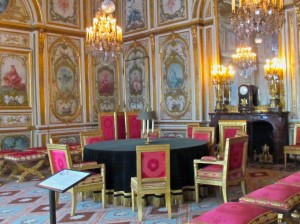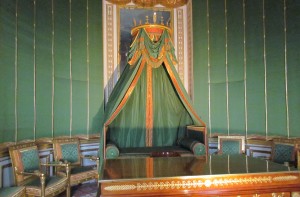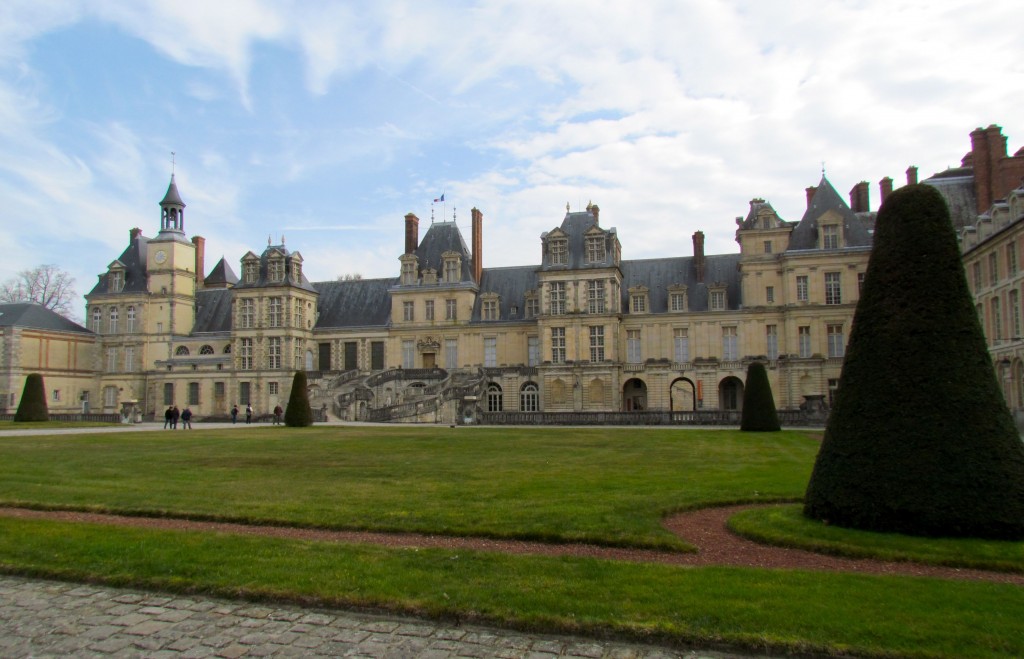Fontainebleau! Home to French kings for eight centuries, Napoleon spent vast sums to restore it, initially to house the pope whom he’d coerced into attending his 1804 coronation (only to crown himself rather than allowing the pope to do it). Years later, Emperor Napoleon imprisoned that same pope within its walls for eighteen months until he agreed to give up temporal powers—that is, to stop interfering with Napoleon. Meanwhile, it served as a country palace.
 It’s a grand place full of large ornately gilded rooms. Interestingly, Napoleon chose for his bedchamber a smallish plain room. He decorated the antechamber where he met at all hours with his generals and advisors in a distinctly military style, draping the ceiling and walls with fabric to create a campaign-tent atmosphere. The furniture, too, is sleek and business-like. You get the distinct impression of a man who could have everything, but chose to keep his private surroundings simple.
It’s a grand place full of large ornately gilded rooms. Interestingly, Napoleon chose for his bedchamber a smallish plain room. He decorated the antechamber where he met at all hours with his generals and advisors in a distinctly military style, draping the ceiling and walls with fabric to create a campaign-tent atmosphere. The furniture, too, is sleek and business-like. You get the distinct impression of a man who could have everything, but chose to keep his private surroundings simple.
In 1814, Fontainebleau was the site of Napoleon’s abdication. Before leaving for exile on Elba, he gave his farewell speech to his military guard in the grand front courtyard. It’s now called the Cours des Adieux, the Courtyard of Farewell. Less than a year later, after escaping from Elba, he returned for one day, on his way to Paris to briefly re-establish himself as emperor.

